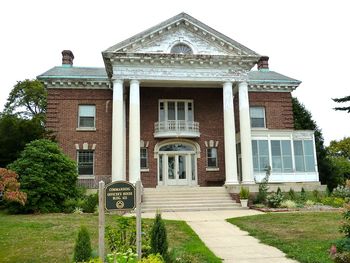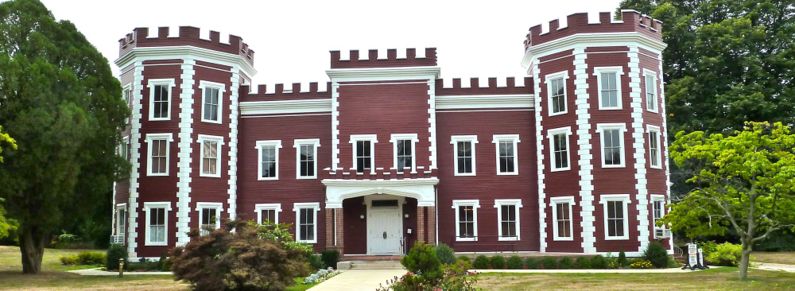Fort Totten (3)
|
Fort Totten (3) (1862-1995) - A Third System coastal defense fort originally funded by Congress in 1857. Construction began in 1862 during the U.S. Civil War under the supervision of Col. William P. Trowbridge. Originally known as the Fort at Willet's Point (1857-1861) then as Camp Morgan (1) (1861-1898) and finally as Fort Totten (1898-Present). Named in G.O. 106, 1898, for Maj. Gen. Joseph G. Totten, Chief Engineer of the U.S. Army. Congress approved the closing of Fort Totten in 1995.
History Fort Schuyler (1) and Fort Totten were both established as Third System Forts to protect New York City from a sea attack by closing the western end of Long Island Sound. The original Third System fortifications included an incomplete Water Battery. The Water Battery was started in 1862 during the U.S. Civil War but work was halted in 1864 when it became clear that the new rifled artillery could easily destroy the battery. Two batteries were built during the 1870s, the 16-gun Mortar Battery and the 27 Gun Battery.
Endicott PeriodPart of the Harbor Defense of Eastern New York.  Construction of the Endicott Period main gun line at Fort Totten began in 1896 and was completed in 1899. The three batteries that constituted the main gun line, Battery Mahan, Battery Sumner, and Battery Graham, were constructed as one battery and not named as separate batteries until G.O. 78, 25 May 1903. The separate 12" Mortar battery, Battery King, was built between 1898 and 1900. Three separate smaller caliber batteries were all completed by 1904. By the end of 1904, all seven Endicott Period gun batteries were complete and accepted for service. A mining casemate was completed and accepted for service in 1899 and an electric plant for the batteries was completed and accepted for service in 1900. The Endicott Period post-construction program began even before the battery construction began and three 133-man barracks were completed by 1894. Endicott Period construction continued for about fifteen years, building out the support structures and Officer and NCO housing. By 1910 the post was essentially complete.
World War IThe U.S. entry into World War I resulted in a widespread removal of large caliber coastal defense gun tubes for service in Europe. Many of the gun and mortar tubes removed were sent to arsenals for modification and mounting on mobile carriages, both wheeled and railroad. Most of the removed gun tubes never made it to Europe and were either remounted or remained at the arsenals until needed elsewhere. Fort Totten was especially hard hit by the World War I redistribution. Four batteries, Battery Mahan, Battery Graham, Battery Sumner, and Battery Stuart had their gun tubes dismounted and readied for service abroad and none of them were ever rearmed. The loss of these four batteries removed all of the large-caliber rifles from Fort Totten and left only the 12" mortars of Battery King for large-caliber defense. Battery King was deactivated in 1935 leaving the Fort without any large-caliber defense. World War IIBy the beginning of World War II, only the 3" guns of Battery Baker and Battery Burnes remained active on Fort Totten. The fort had various support missions during World War II and a number of temporary structures were built to house and support increased troop levels. Fort Totten served as the Headquarters for the 1st Region NIKE missile defense system for New York and New England from 1954 to 1974. Current StatusIn 1995 Congress approved the closing of Fort Totten. In 2004, 49.5 acres were turned over to the NYC Parks Department by the National Parks Service and U.S. Defense Department. In 2005 Fort Totten Park opened to the public.
Sources:
Links:
Visited: 21 Aug 2010 | |||||||||||||||||||||||||||||||||||||||||||||||||||||||||||||||||||||
- Visited
- All
- New York All
- New York Forts
- Coastal Forts
- U.S. Civil War Forts
- Third System Forts
- Endicott Period Forts
- World War I Forts
- World War I Coastal Forts
- World War II Forts
- World War II Coastal Forts
- Harbor Defense of Eastern New York
- New York Queens County
- Fort Totten (3)
- New York City Forts
- Preserved
- City Park


